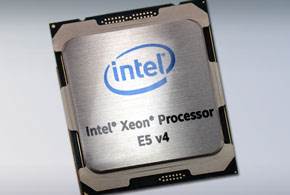At IDF last week, the two companies announced an expansion of their long partnership to include the carrier’s network transformation project.
A key focus of Intel executives at the company’s annual developer event last week are the ultra-fast wireless networks that will help service providers and enterprises handle the rapidly growing number of devices and sensors that make up the internet of things.
The chip maker wants to be the provider of the foundational technologies for the internet of things (IoT), from the devices on the edge to the data center and the networking technologies connecting the two. As part of the effort, Intel officials at the show announced an expanded partnership with AT&T, which will adopt Intel technology as it builds out its software-centric network.
The two companies already partner in a number of areas, including 5G networks and drones, and now Intel products will be used in the carrier’s high-profile project to use technologies like software-defined networking (SDN) and network-functions virtualization (NFV) to make their networks more flexible, scalable and automated and better able to deal with the rapidly changing demands brought on by such trends as the IoT, cloud computing, virtualization, mobility, 4K video, virtual and augmented reality, and data analytics.
Diane Bryant, senior vice president and general manager of Intel’s Data Center Group (DCG), told attendees during the Intel Developer Forum (IDF) that standard Intel technologies can more easily than expensive custom silicon enable the virtualized networks defined by software that will be the backbones of cloud and IoT infrastructures.
When introducing the expanded partnership, Bryant favorably compared AT&T to the group of public and private cloud providers that Intel refers to as the “Super 7,” saying that with the carrier, the group is now the Super 7+1. Those other companies are Amazon, Microsoft, Google, Baidu, Alibab, Facebook and Tencent. Because it’s now included in that group, AT&T will now be able to gain early access to upcoming products and technologies from Intel that can be used and tested within its environment.
Patrick Moorhead, principal analyst with Moor Insights and Strategy, said the designation was an important one for AT&T that will give a boost to the carrier’s network transformation efforts. It’s also gives Intel a path for developing and testing silicon for the upcoming 5G networks. However, Moorhead was uncomfortable with the idea of including AT&T in the same group with the other companies.
“The Super 7 came about because of what [those companies] had accomplished, not what they could accomplish,” Moorhead told eWEEK, adding that now Intel is adding AT&T “without having accomplished what the Super 7 have done.”
What AT&T is looking to do is take advantage of standard and open technologies to create a new network for the digital age. By leveraging Intel’s Xeon server chips, the service provider is hoping to take the various networking tasks that traditionally have run on specialized and expensive hardware and put them into software that can run on standard x86-based systems. The company expects to have 75 percent of its network virtualized by 2020.
Other telecommunications companies, such as Verizon, also have projects underway to use SDN and NFV to transform their networks.
AT&T’s initiative has been underway for several years, and the company is still on track to meet that goal, according to John Donovan, chief strategy officer and group president of AT&T’s technology and operations, who took the stage with Bryant at IDF. He talked about the importance of new technologies like 5G, SDN and NFV in creating networks that can handle the trends shaping the IT and business worlds, with fast speeds, low-latency, high scalability and the agility “to change … on the fly.”
“What used to take weeks can now take seconds,” Donovan said. “You can add capacity to the networks and it takes 91 seconds. It used to take us 120 days.”
In a post on the company blog, Andre Fuetsch, senior vice president of architecture and design for AT&T’s Domain 2.0 project, wrote that the carrier will “be optimizing NFV packet processing efficiency for our AT&T Integrated Cloud, or AIC. We’ll also define reference architectures and align NFV roadmaps to speed up our network transformation. This means we’ll continue to get new software-based network services and capabilities to our customers faster than ever, just as we did with Network on Demand and Network Functions on Demand. Open source software running on hardware powered by Intel chips will enable many of these virtualized network functions.”
AT&T officials in July helped push the effort by releasing its Enhance Control, Orchestration, Management and Policy (ECOMP) management and orchestration platform to the open-source community via the Linux Foundation. They hope that by giving service providers and cloud developers access to all 8.5 million lines of code in ECOMP, they can accelerate innovation in networking.

![[Interview] The Technologies Bringing Cloud-Level](https://loginby.com/itnews/wp-content/uploads/2025/11/1763822314_Interview-The-Technologies-Bringing-Cloud-Level-238x178.jpg)





